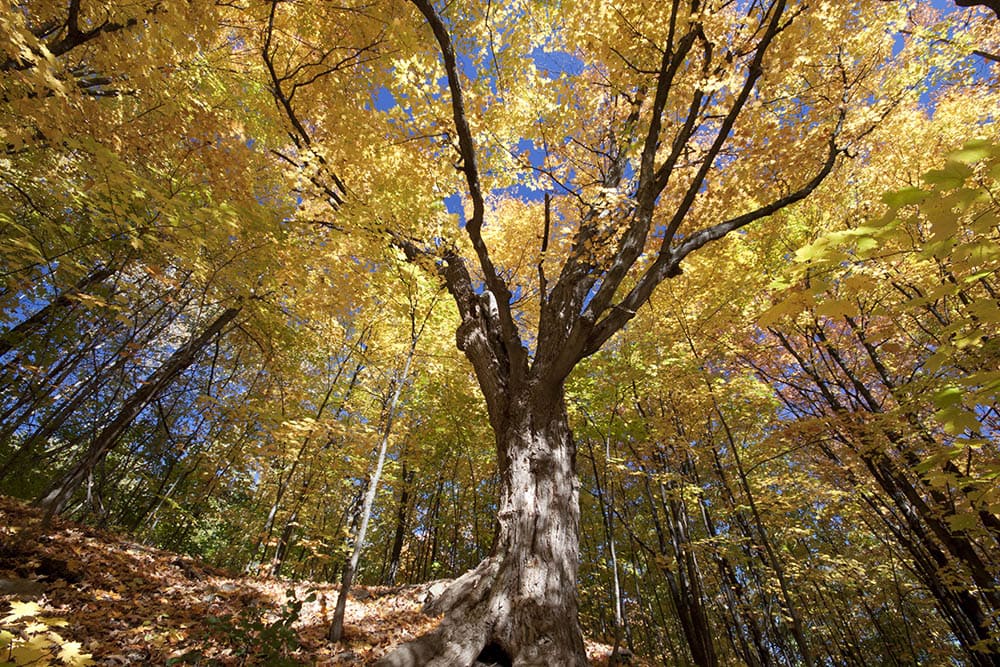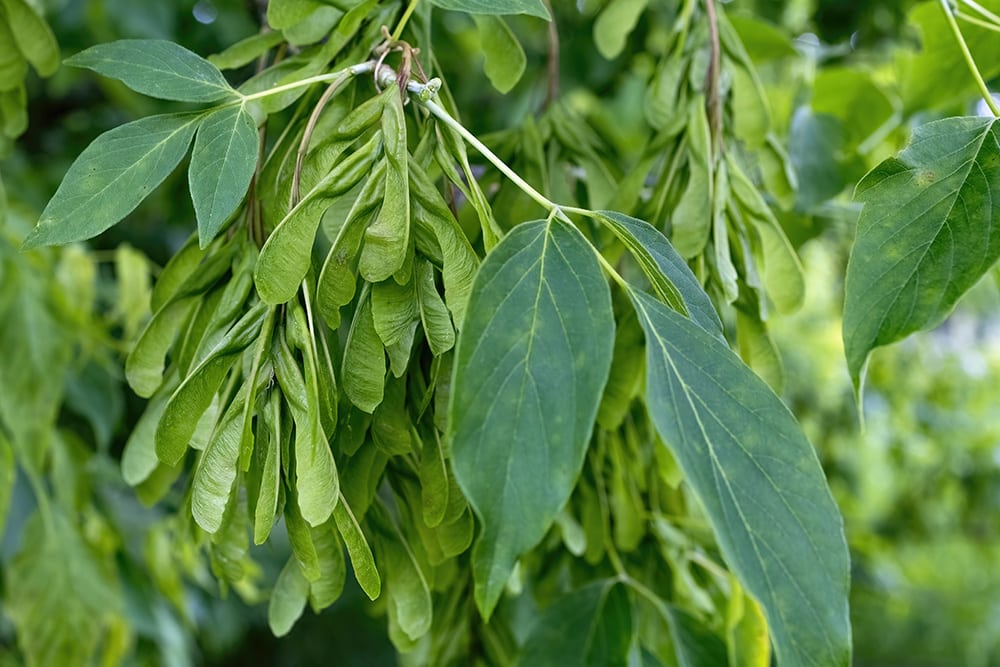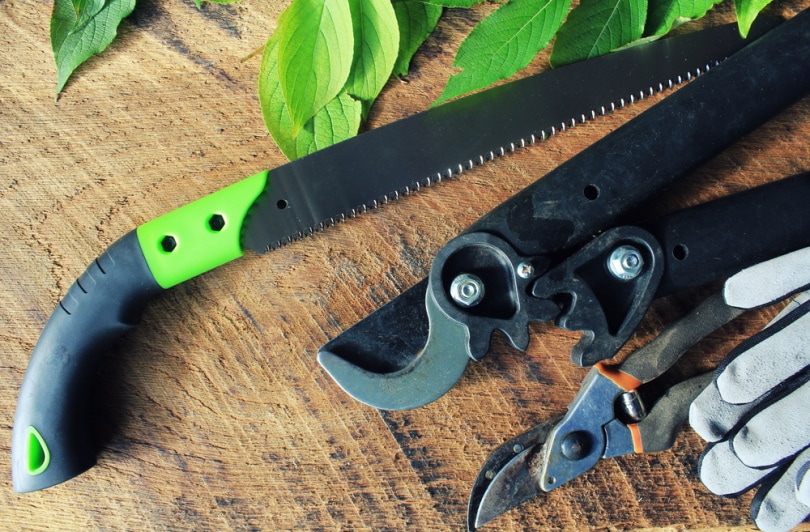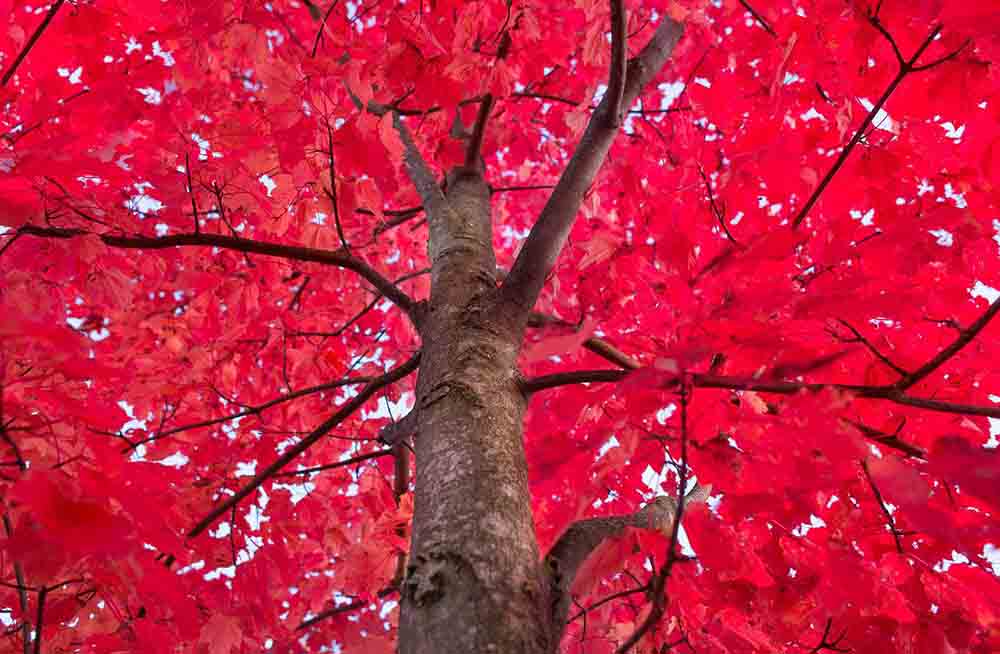6 Tips on When and How to Prune Maple Trees
-
Pete Ortiz
- Last updated:

Maples are impressive, large trees common throughout the USA and Canada. They are known for maple syrup, a tasty treat for desserts. There are over 130 species of this tree, all with palmate leaves which turn yellow, orange, or golden brown in autumn.
With a growth rate of 13 to 24 inches annually, they turn from seedlings into large trees within a few years. Part of shaping the tree into a neighborhood sensation is pruning it occasionally. Find out how below.
When Is the Best Time to Prune a Maple Tree?
You can easily cut decaying, broken, or diseased branches immediately after they appear. But it’s always advisable to keep the more involved sessions of thinning and shaping healthy green growth to once or twice a year.
For most of the year, choosing the best time for the primary trimming session is challenging. Many gardeners limit pruning before the first flush growth, which appears in spring, as this may lead to the most vigorous growth for most trees. Therefore, scheduling your trimming sessions in early spring or late winter is a good idea. You can also opt for summer if you wish to slow the growth of some branches. This shapes the tree and removes any dead or unhealthy branches.
While fall may be the most convenient time to prune maple trees, the cold weather is harsh on the trees, and introducing pruning wounds will cause more problems.

What’s the Importance of Maple Tree Pruning?
A regular schedule for pruning your trees is crucial. Proper trimming prevents trees from growing beyond a certain threshold or crossing over to the other side of the fence. If trees grow too large and begin to hang over your neighbor’s yard, this may result in a lot of problems.
Always strive to maintain order and cleanliness for everyone’s happiness by controlling the growth of trees around fences. In addition, trimming and pruning help maintain robust trees and stop small branches from falling onto your lawn.
The 6 Tips on How to Prune a Maple Tree
Knowing a few basic practices about how to prune your maple tree can go a long way in rewarding you for the time and dedication invested in the plant.
1. Carefully Plan Before Pruning
Pruning ought to follow a well-defined plan. Before pruning, consider the purpose or reason.
Making cuts in a specific order helps reduce the total number of cuts. Skilled pruners start by removing broken, diseased, dead, or problematic limbs by cutting them at the source or back to a sturdy shoot or lateral branch. In many cases, getting rid of this debris reduces the canopy and eliminates the need for further pruning.
Another reason is cutting lateral branches helps the tree to take on a specific shape, fill in a hole left by wind or storm damage, or stay within certain boundaries to fit a given space. Also, understanding your tree’s natural growth habits is necessary for good trimming. Always avoid damaging the plant’s growth habit or natural form while pruning unless you’re keeping a careful watch on it.

2. Select Pruning Equipment Correctly
This point can’t be stressed enough—pruning with the right equipment is not only safe for the tree but also reduces the time and energy involved in the process. Based on the positioning and size of branches being cut, skilled pruners will use a hand pruner, chain saw, rope saw, and pole pruner.
A hand pruner chops off young branches that are less than an inch thick. A chain saw, on the other hand, cuts off thicker limbs effortlessly. Use it on large branches and while standing on a ladder. Lastly, a rope saw and pole pruner is for accessing branches while standing on the ground. A rope saw is good for less than 4-inch-thick branches, while a pole pruner will target small and soft tips. If branches are beyond a rope saw’s reach, extend it with a pair of ropes tied on both sides.
By far, rope saws and pole pruners are the safest pruning tools since you will be using them while standing on the ground. In case of any problems, you can move to safety quickly.
Another key thing you should note is tools ought to be cleaned and oiled periodically. This includes wiping blades and other metal surfaces with an oily cloth. Maintaining sharp cutting edges often requires a few passes with a good oil stone. Branches with clean cuts tend to mend properly as opposed to cuts made with dull tools.

3. Prune Away Branches That Crisscross Each Other
Crisscrossing branches rub against each other during a mild breeze, resulting in wounds. These are key entry points of pathogens that will weaken the tree.
4. Sometimes You Need to Limit Pruning
Improper pruning may lead to damage, which may last throughout the tree’s lifetime or shorten its longevity. If you get carried away and over-trimmed your tree, there is no going back.
Selective removal of stems and branches increases air movement and light penetration through the crown. It also reduces the weight exerted on heavy limbs, opens the tree’s foliage, and helps retain a tree’s natural shape.

5. Never Remove More Than Three-Quarters of the Living Crown
The living crown of a maple tree is healthy branches and green leaves responsible for photosynthesis. Naturally, a tree will produce leaves according to its energy demands. Pruning down the living crown to less than a quarter of its original mass greatly affects its health. The tree may not produce enough sugar to survive through winter, and it may succumb to minor pest and disease attacks.
6. Always Seek Professional Help When Stuck
Letting a reputable tree company prune your maple tree is advisable for safety reasons. Skilled personnel have the required equipment and skills to get the job done securely. Another dangerous condition that can call for professional assistance is pruning limbs close to electrical cables.
Conclusion
Pruning is both the easiest and the most difficult task on a tree maintenance schedule—it depends on your level of experience. If you prune maple trees in early spring or autumn, use the right tools, and observe natural growth patterns, then you are on the right path.
Be careful not to overdo it, though, as there’s no turning back.
Featured Image Credit: Mircea Costina, Shutterstock
Contents


